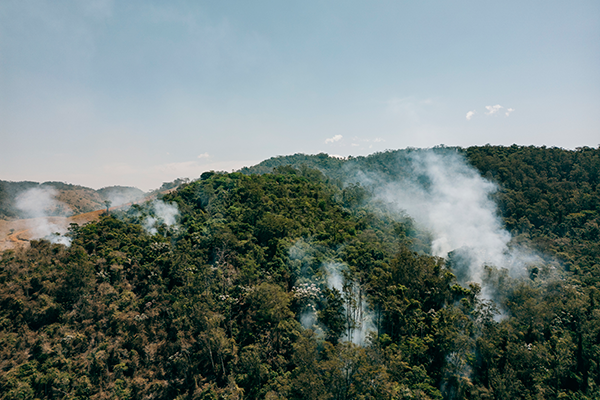
Dr. Gerardo Alberto Martínez, a researcher at the Universidad Internacional Iberoamericana (UNIB), together with a team of researchers from other institutions, including Dr. Débora Libertad Ramírez, a researcher at the Universidad Internacional Iberoamericana de México (UNINI Mexico), is participating in a study that proposes a solution for the early detection of forest fires using deep learning deployed on edge devices.
Forest fires continue to cause significant ecological and economic losses, with increasing threats due to climate change. Early detection is crucial to reducing response times and damage, but traditional systems (sensor networks, cameras with centralized analysis, or satellites) often register false positives, depend on constant connectivity, or lack effectiveness in remote areas.
Likewise, in recent years, deep learning-based methods have achieved high success rates, although they often require intensive computing, which makes it difficult to operate them on low-power equipment and use them continuously in the field. This challenge limits the adoption of solutions in areas with limited infrastructure, precisely where early detection is most critical.
In this context, the study introduces an autonomous edge-based fire and smoke detection system that uses MobileNetV2, a lightweight convolutional network optimized for resource-limited devices. This proposal performs local inference without relying on the cloud, generating labels, confidence, and timestamps on the device itself; it only connects intermittently to issue critical alerts with images and GPS coordinates, increasing resilience and cybersecurity.
To develop it, the team collected and curated thousands of photos of fire, smoke, and non-fire scenes; then trained an AI with transfer learning (leveraging prior knowledge and then adjusting it to the problem), optimized it to a lightweight format to run fast and with low power consumption, and deployed it on a small camera-equipped device that continuously analyzes images without relying on the cloud.
Relevant results of the study
The results confirmed solid and stable performance in both laboratories and on the edge device. The system achieved 97.98% accuracy and few errors centered on visually ambiguous situations. On the edge device, it works in near real time, and thanks to optimizations, the model is much lighter without losing effectiveness. Compared to other lightweight alternatives, it offers a better balance between accuracy and efficiency. In addition, it maintains good performance with external data (good generalization), and analyses confirm that each design decision (two-phase training, pruning, and quantization) provides complementary improvements.
In practical terms, this means that the system can be deployed in remote areas without continuous connectivity, operate with very low power consumption (even with solar power), and maintain service despite network outages. As next steps, we plan to add thermal sensors to improve performance at night or in dense smoke and conduct extended field tests with continuous video to measure and reduce false positives and shorten detection times.
If you want to learn more about this study, click here.
To read more research, check out the UNIB repository.
The Universidad Internacional Iberoamericana (UNIB) offers master's degrees in various areas, such as the Master's Degree in Strategic Management with a Specialization in Telecommunications. This program prepares you to design and lead critical networks and infrastructure that support IoT, edge computing, continuous video, and sensors in real-world scenarios. Take the next step to boost your telecommunications career at UNIB.